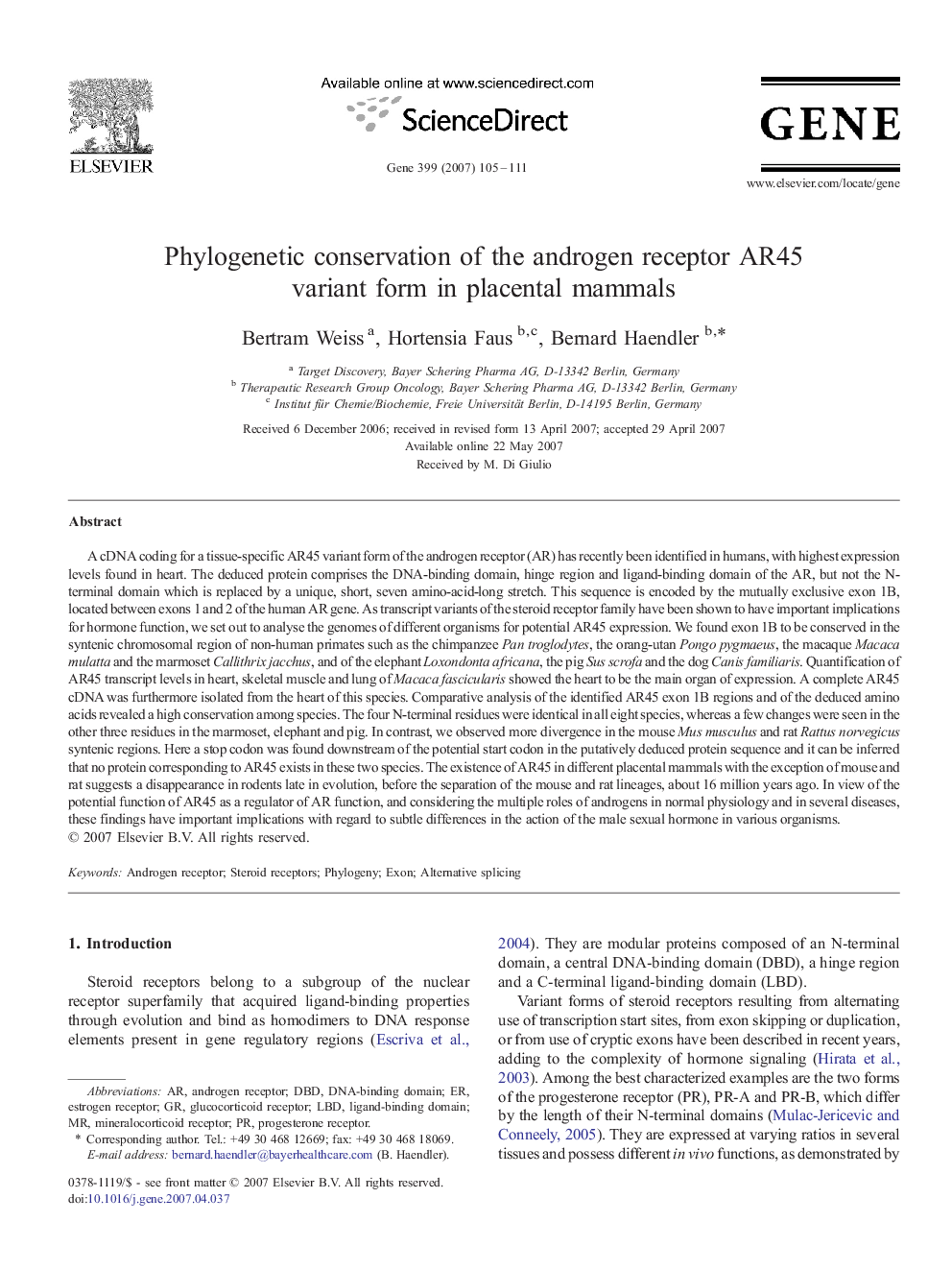| Article ID | Journal | Published Year | Pages | File Type |
|---|---|---|---|---|
| 2819622 | Gene | 2007 | 7 Pages |
A cDNA coding for a tissue-specific AR45 variant form of the androgen receptor (AR) has recently been identified in humans, with highest expression levels found in heart. The deduced protein comprises the DNA-binding domain, hinge region and ligand-binding domain of the AR, but not the N-terminal domain which is replaced by a unique, short, seven amino-acid-long stretch. This sequence is encoded by the mutually exclusive exon 1B, located between exons 1 and 2 of the human AR gene. As transcript variants of the steroid receptor family have been shown to have important implications for hormone function, we set out to analyse the genomes of different organisms for potential AR45 expression. We found exon 1B to be conserved in the syntenic chromosomal region of non-human primates such as the chimpanzee Pan troglodytes, the orang-utan Pongo pygmaeus, the macaque Macaca mulatta and the marmoset Callithrix jacchus, and of the elephant Loxondonta africana, the pig Sus scrofa and the dog Canis familiaris. Quantification of AR45 transcript levels in heart, skeletal muscle and lung of Macaca fascicularis showed the heart to be the main organ of expression. A complete AR45 cDNA was furthermore isolated from the heart of this species. Comparative analysis of the identified AR45 exon 1B regions and of the deduced amino acids revealed a high conservation among species. The four N-terminal residues were identical in all eight species, whereas a few changes were seen in the other three residues in the marmoset, elephant and pig. In contrast, we observed more divergence in the mouse Mus musculus and rat Rattus norvegicus syntenic regions. Here a stop codon was found downstream of the potential start codon in the putatively deduced protein sequence and it can be inferred that no protein corresponding to AR45 exists in these two species. The existence of AR45 in different placental mammals with the exception of mouse and rat suggests a disappearance in rodents late in evolution, before the separation of the mouse and rat lineages, about 16 million years ago. In view of the potential function of AR45 as a regulator of AR function, and considering the multiple roles of androgens in normal physiology and in several diseases, these findings have important implications with regard to subtle differences in the action of the male sexual hormone in various organisms.
